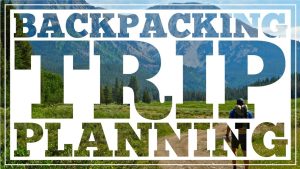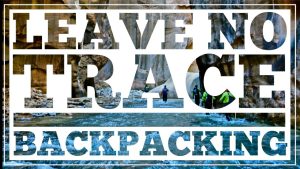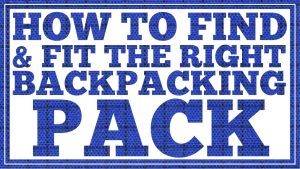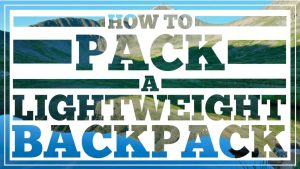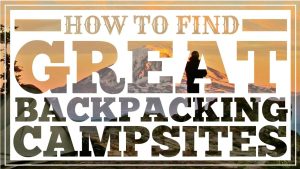Ep. 18 – Backpacking Blades – Knife Safety, Sharpening, & Types
Some of the links on this page are affiliate links
Episode 18 – Backpacking Blades
In the wilderness, your knife is a very important tool and knowing how to use it properly could save your life. You can use your knife to help make a fire in the rain, build an emergency shelter, whittle tools for survival, fix broken gear, and even protect yourself against wild animals. On the other hand, not knowing how to use your knife properly can put you in great danger. Breaking your blade or giving yourself a deep wound could put you in a terrible survival situation in wilderness.
For that reason, it’s important to always practice proper knife safety and test your tools before you take them into the backcountry. Knife safety may seem simple, and it often is, but don’t take it lightly. In an emergency situation you might be hungry, cold, and exhausted. Using your blade quickly and without care could make a bad situation much worse and could even put your life at risk.
Knife Safety
The first rule in knife safety is to never carve towards you. Instead carve away from your body with firm controlled strokes. Also, don’t carve around other people. Make sure that you have at least an arms distance from the nearest person.
Never rush or make quick strokes and always keep your eyes on what you’re doing. Even the most experienced outdoorsman can make mistakes, so pay close attention.
Don’t run with an open knife or try to grab a falling blade. If you drop your knife, let it fall to the ground and move your feet out of the way.
Don’t leave an open blade lying around and always use two hands to close your knife safely.
Don’t hand someone an open knife if it can be closed. If it’s a fixed blade knife, give it to them handle first and make sure they have a firm grip before you let go.
Don’t use your knife to pry things open, because blades can break.Don’t throw your knife either because it can break or easily get lost.
Always put you knife in the same location after using it so you can easily find it.
Also, keep your knife nice and sharp because a dull knife is a bad tool. A dull knife will take more energy to cut and will force you to use more pressure, which can cause slip-ups.
Test your knife at home and sharpen it before you take it into the backcountry.
Knife Sharpening
Sharpening a knife is easy and won’t take much time if you keep your blade in good condition. There are lots of ways to sharpen a knife, so if you have an expensive blade, make sure to do a little research first.
To sharpen a simple pocketknife you’ll only need a basic sharpening stone and some sharpening lubricant or water. If your knife is dull or damaged, use the coarse side of your stone first and then switch to the finer grain side to get that razor sharp edge.
To start, lubricate your sharpening stone, hold your blade at a 10-15 degree angle, and push the edge of the blade down the stone, tapering off at the end to sharpen the tip of the knife.
Do this eight times on one side, then flip the blade over and do it eight times on the other side. Make sure to keep your sharpening angle consistent throughout the entire process.
When you’ve completed eight strokes on each side, do eight more strokes alternating the sides of the blade to keep your edge centered and even. Also, make sure not to neglect the part of the blade that’s closest to the handle because that’s the area that you’ll use the most for carving.
When you’ve completed the process on the coarse side of the sharpening stone, flip over to the fine side and repeat the process.
Test your knife by slicing a piece of paper. If it cuts easily, you’re good to go. If it crumples, it still needs sharpening. Also, don’t check the sharpness of your knife with your body parts. Use a small stick rather than risking a foolish cut.
Knife Types
Having the right type of blade for your trips depends on what you plan to use it for.
A fixed blade knife doesn’t have any moving parts so it will be strong and reliable. They are very tough and can be good for tough use in survival situations. The downside with fixed blades is that they’re heavy and much less compact, so it’s rare to see backpackers carrying them.
A folding knife or locking blade knife will be much more compact and will generally be much lighter too. They do have more moving parts and won’t be quite as sturdy as fixed blade knives, but they’re still very reliable. Also, Be very careful with closing a folding knife so you don’t close it on your fingers, which is a common accident with locking blades.
Multi-tool knives can also be light and compact. They come with a bunch of other tools, some of which might be useful, like pliers for repairing gear in the field. Some multi-tools are unnecessarily heavy though and have way too many gadgets that aren’t useful. The knives on multi-tools tend to be basic but functional, so if you’re looking for a really powerful blade, this usually won’t be the best fit.
Some lightweight backpackers hike with the most basic and lightweight cutting tool, a flat razor blade. This is obviously very light, but it’s only somewhat functional.
Wrap Up
To maintain your knife, keep it dry, sharp, and clean. Use oil on the blade and hinge to keep it working smoothly and keep rust off. Never try to take apart your knife or wash it in a dishwasher.
You might find that having a big knife while backpacking can be a bit overkill because you’ll mostly be using it for small tasks like cutting food packets, or tent cord. If that’s the case, minimize your knife weight, but make sure you still have the functionality that you would need in a survival situation.
Carrying a trusty knife and knowing how to use it properly could make a big difference on your next backcountry trip.
MORE EPISODES IN THIS SERIES
View all